We explore the sound of fear, the importance of sound design in horror, and the various ways filmmakers use sound to enthrall and terrify.
While horror may not be for everyone, those who love it tend to be quite passionate about our love, from shocking scares and gripping tales to the potent way horror films reflect our collective fears and often reshape how we view the world. Horror is wildly entertaining but can be more than just mindless thrills and chills.
Obviously, visuals play an essential role in the power of the genre to captivate and terrify. But the sound design is equally critical, and, in many cases, it is even more instrumental in helping evoke a strong emotional response in viewers.
The horror genre is about raw, visceral emotion. It targets the basic human fears, whether rooted in current cultural anxieties or fears that tap into our primal flight or fight response.
Audio helps create an atmosphere, as tension can be raised to an uncomfortable degree. This can impact audience reactions, such as screaming, gasping, jumping, or sinking in the seat with eyes covered tightly behind hands.
The Role of Sound Design in Horror Movies
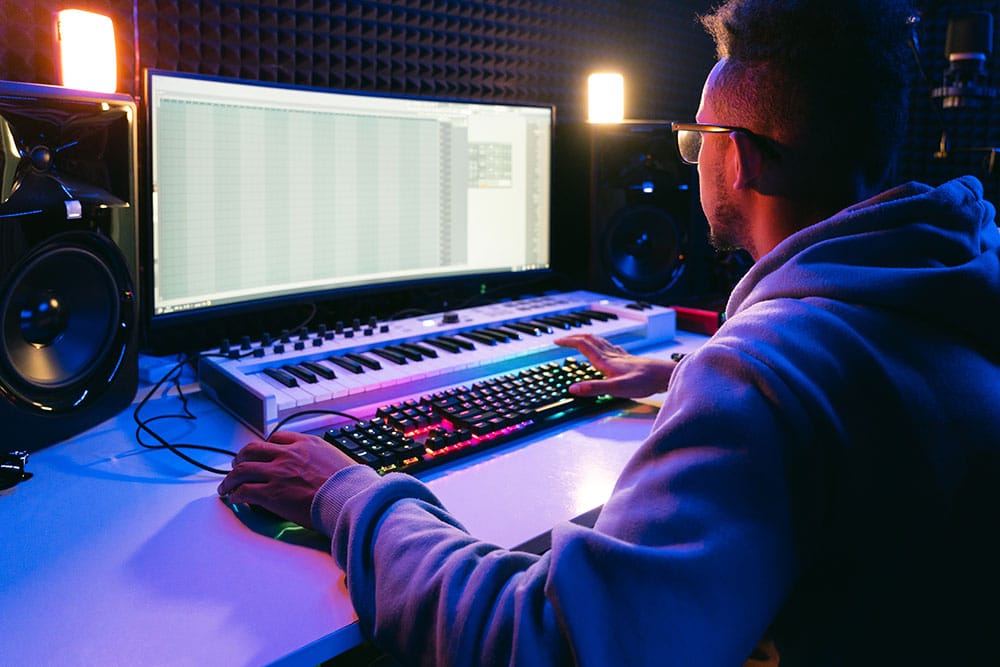
Sound plays a crucial role across the movie industry, but it is arguably the most important in horror films. If you are a fan of the genre or have ever been scared out of your mind by a horror movie, then you already know how much of a critical role great music and sound design play in making the art form as powerful and effective as it is.
From ambient sounds and foley work like a creaking door or footsteps in the attic to screeching violins and blood-curdling screams, great sound design is more than just a killer score.
Of course, music is one of the most effective ways to evoke powerful emotions in the viewer. Fast-paced music can get the blood going and keep heart rates up, as viewers will be expecting something to happen. On the other hand, a slower beat can relax audiences and even lull them into a false sense of safety, thus giving them an extra fright when something happens because it is unexpected.
To understand the impact of sound in film, you only need to watch an icon and terrifying or unsettling scene from a horror film with and without sound to experience the difference in tension, mood, and fright levels.
A great example of this can be found in the famous Steadicam scene from Stanley Kubrick’s The Shining, where Danny Torrance rides his tricycle through the empty halls of the hotel and ends up standing in front of the door of the haunted room 237.
This scene is notable for being incredibly chilling. However, if you watch the clip without sound, you may find it boring and highly uneventful. That’s because nothing actually happens in this scene to terrify viewers. Give it a try by watching the scene below with sound and then watching again with the sound on mute.
Without sound, it’s relatively innocuous and innocent; with sound, however, it’s highly unsettling.
We hear the sound of Danny’s bike passing over wooden floors and carpets. In the background, however, the non-diegetic music (background music not audible to the characters in the film) is getting gradually louder. This music is ominous, with jarring and tonally unpleasant elements that signal the viewer that we should be on edge and aware that something is not right. In fact, if you watch Kubrick’s masterpiece without sound, the movie loses much of its effect.
This brilliant sound design from Polish composer Krzysztof Penderecki makes the film as infamously unnerving as it is.
Penderecki’s score features tri-tones (more on that later), choral music, and the dissonant sound of children singing, which brings elements of the unholy and the demonic to mind. Penderecki is also notable for composing the hugely experimental and disturbing soundtrack for The Exorcist (1973), which featured uneasy strings and tone clusters. He was incredibly effective in his use of sound mass, the name given to a composite of sounds in which the texture and dynamics are more important than the sense of harmony.
There are numerous examples of sound playing a vital role in making a horror film as iconic and memorable as it is.
Steven Spielberg’s shark-infested classic Jaws would certainly not be the same without the instantly recognizable soundtrack, which signals the arrival of the shark. Consider also the impact of sound on the genre’s most influential slasher films, Halloween and Friday the 13th.
When horror movies create shock effects, primarily what is known as jump scares, sound is typically a key element.
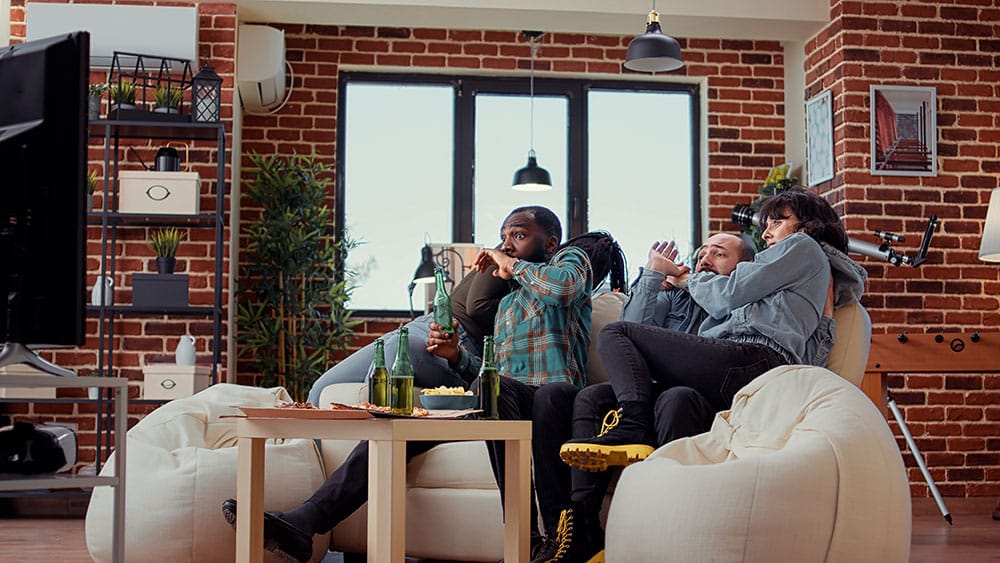
Typically, the movie will gradually build up to the actual moment of shock. This often consists of the aforementioned non-diegetic, ominous music in the background, followed by a loud sound when the shock occurs.
One great example of this can be found in Jaws when marine biologist and shark expert Matthew Hooper (Richard Dreyfuss) discovers the missing boat of local Amity Island fisherman Ben Gardner (Craig Kingsbury). Gardner had hoped to collect the reward for catching the rogue shark that had plagued the Island of Amity in the summer of 1974. When Hooper goes diving to explore the wreckage, he finds a huge shark tooth within the hull.
The string music playing in the background puts viewers on edge, knowing danger is lurking. Suddenly, a pale, decapitated, partly dissolved human head emerges in the hole.
It’s a shocking sight, and the visuals are compelling. But it is the loud, screeching sound of the violin that really creates the effective fright.
You can check out the famous scene below, again with and without sound, to understand and appreciate the importance of sound design in this seminal horror film.
Types of Sound in Horror Movies
As filmmakers are considering the elements of sound that will help shape the tone and direction of the film, they must consider everything from the background sounds that help place the audience within the cinematic world to the signaling of an “unseen character” that is to be hinted at before they are introduced to the characters/audience. This could involve the sound of footsteps, scraping and scratching, and off-screen dialog, like the phone conversations in Scream.
The proximity of the threat in horror films is also emphasized by sound. The closer the threat, the more anxious and scared the audience needs to feel. To build tension and suspense, it helps to use the increasing intensity of the music, slowly bringing the threat closer until the point of confrontation and maximum terror.
Another element is subjective sounds, which are the sounds that represent what the character hears in their own mind. The video below does a stellar job of explaining subjective sound with powerful cinematic examples.
Infrasound, a sound that can’t be heard, is vital in setting an ominous tone.
Humans can hear sounds in a frequency range from approximately 20 Hertz (cycles per second) to 20.000 Hertz, but we can register even lower sounds. Infrasound is a wavelength of sound just out of range for human ears to hear. But even though you can’t hear it, it still causes quite a reaction.
When it comes to horror films and haunted houses, the utilization of infrasound contributes to feelings of uneasiness, anxiety, fear, and anger. And it puts viewers on edge as they anticipate the next scare.
When the French shocker Irréversible premiered at the Cannes Film Festival, several audience members fainted. There are many reasons for that. But one contributing factor could be that controversial director Gasper Noé (Climax) inserted extremely low-frequency sound into the movie to disturb his audience.
Infrasound has most commonly been described as “extreme bass waves or vibrations” and can be described as a low humming sound. But infrasound is not used alone to create this effect. Musical scores and sound effects help amplify on-screen tension and provide a significant jolt when there is a sudden change in audio and visuals. A great example of this can be found at the end of Carrie (1971) and Friday the 13th (1980).
The filmmakers in these two cases thought getting one last shot in before the credits rolled was important. The goal was to ensure the audience left with their heart racing, making the film as memorable as possible. The music they overlayed made sure that audiences were allowed to relax for just a second before they were walloped with a big shock. Watch how it’s done in Carrie and in Friday the 13th.
Dissonance is a concept that often comes up when we’re talking about great sound design.

Dissonance is defined as a lack of harmony among musical notes, and it can be inherently creepy and unsettling.
This can be accomplished by clashing musical notes or even a disconnect between the music and the visuals.
Ever wondered why children’s singing or toy pianos are used to such great effect in horror movie scores? There’s a reason why so many horror movie trailers use slowed-down, hauntingly ethereal versions of popular songs, giving the effect of a lullaby in sharp contrast to the horrifying visuals.
One of the most famous examples is the use of the “One, Two, Freddy’s Coming for You” lullaby in A Nightmare on Elm Street.
Another chilling example is Samara’s song in The Ring.
The infamous ‘tri-tone’ has been referred to as The Devil’s Interval since the late middle ages.
Two notes an octave apart are at a perfect 2:1 ratio. This relationship is so perfect to our ears that we give both notes the same (only an octave apart).
On the other hand, the tri-tones have an unbearable ratio of 45:32 or 64:45, depending on the tuning. That’s one reason why tri-tones are often used in sirens and alarms, given how effectively they grab our attention.
The tri-tone has historically evoked an unsettled and ambiguous feeling. It rubs us the wrong way because of its dissonant nature. Being six semitones away and the 6th step in the circle of fifths away from the tonic (the ideal harmonic sound)– perhaps a symbolic connection to the devil’s number, 666 – it is ideally positioned so that moving one step in either direction results in a consonant and more satisfying interval.
Because of its association with evil, it has been used as an important strategy in horror film scores to bring the audience along an unsettling journey and to embody the monster or dark force.
Danny Elfman frequently uses this technique in relation to demonic characters or situations. Perhaps nowhere is it more effectively used than in The Frighteners (1996) and Beetlejuice (1988).
The musical drone is a final example of an auditory horror effect used in sound design.

A drone is a continuous, monotonous sound that occurs when a note or chord is drawn out and can be heard in bagpipe music.
By itself, it’s not necessarily scary. But it is often found in horror movies and can seem ominous. This is probably because the drone usually does not have an obvious source; you cannot see where the sound is coming from, and it just keeps going and going without change or deliverance.
Because of its ubiquitous use in horror games and films, it’s often referred to as The Drone of Dread, a musical trope that uses a sustained note as the wholistic sonic experience to underscore a film. Many different instruments have been used to create this technique. There’s no real rhythm to this song or any particular melody. Often multiple droning sounds will come together to form one discordant melody.
The Drone of Dread is most common in horror cinema but can appear anywhere. It generally communicates an otherworldly presence or conveys an overwhelming sense of something wrong. In extreme cases, droning music can use infrasound, as described above, barely reaching the human sensory perception threshold. This evokes an unease linked to real-life reports of supernatural events.
An excellent example of this can be found in John Carpenter’s The Thing, where a drone sound is used to create anxious anticipation. This film’s notable score, composed chiefly by Ennio Morricone, with some small additions by Carpenter, uses sounds reminiscent of a human heartbeat, which has become a common trope of modern horror.
The Psychology of Sound’s Impact on Horror Films

Humans are most comfortable when there is a consistent pattern of predictability. Horror manipulates this desire for consistency and harmony and exposes us to familiar patterns while subverting our expectations.
The majority of Western pop music is similarly constructed using a 4/4 time signature, with tracks built around a 16 or 32-bar building block of intro, verse, and chorus.
Contrastingly, horror scores are often infused with unusual and unpredictable executions. Composers often use specially chosen chords that feel like they should end at a specified point but are held much longer than expected or comfortable. This makes us uncomfortable when watching a horror film. These sustained chords are often played with a trembling effect or in pulsating rhythms, which helps amplify the tension.
Tubular Bells, the iconic theme from The Exorcist, plays with a constantly changing time signature, often landing on an unusual 7/8.
Likewise, the theme from Halloween uses an unfamiliar 5/4 to create the wonderfully eerie and unnerving effect that helps make that film such an influential staple of the genre.
It’s not surprising sound plays such an important role in the creation of modern cinematic fear, given its use throughout history as a psychological component in rituals and warfare.

People perceive such sounds as extremely unpleasant because they are reminiscent of natural warning signals – just like the Aztecs’ death whistles. These whistles produced an unusually unpleasant sound reminiscent of a hoarse death scream and may have been used ritually or even in battle to scare the enemy.
During World War 2, the Germans mounted sirens on their dive bombers which emitted loud, screeching sounds when the planes plunged to fire at the enemy. The point was to intimidate the enemy and break their morale.
Screams and scream-like sounds play a significant role in horror movies, and good biological reasons exist for why that’s the case.
Research has shown that the scream has unique acoustic qualities, making it especially effective at signaling danger. Many animals, in addition to humans, scream when they are in danger.
A scream results from straining the vocal cords and producing an unpredictable, discordant, and jarring sound. A scream immediately commands our attention, indicating someone is in danger and forcing us to react instinctively.
The term “scream queen” was applied to actresses in the genre, like Jamie Lee Curtis in Carpenter’s trend-setting slasher Halloween, who were adept at channeling the power of the scream to blood-curdling effect.
Music in horror movies can also imitate a scream. One of the most famous examples in cinema history is the unforgettable shower scene from Hitchcock’s classic Psycho.
In this scene, the main character (played by Janet Leigh, who just so happens to be Jamie Lee Curtis’s mom) is stabbed to death by an unknown assailant. We hear her fear-inducing scream of death. But we also hear the sound of the composer Bernard Hermann’s famous violins that brilliantly mimic the sound of a piercing scream.
The drone music we discussed earlier plays with the psychological phenomenon called creepiness.
Researchers have shown that situations or persons are perceived as creepy when considered unpredictable or associated with threatening ambiguity. When we don’t know if a person or situation is dangerous, we perceive it as creepy. This causes us to react with a heightened awareness of potential danger signals. A great example is when a stranger seems to stare at us too long, someone follows a bit too close behind us when walking alone, or when we find ourselves in a dark and unknown place.
Humans are, by nature, equipped to detect and respond to sounds. That’s because sound often contains information relevant to our survival, like when hunters used to have to be hyper-aware of an ambush from a lurking animal. Because of this, we’re also biologically programmed to pay special attention to sounds that signal danger, like low, guttural, rapidly approaching, or scream-like sounds.
Humans also perceive approaching sounds differently than receding sounds. There is more activity in the brain’s ‘fear center’ when we hear sounds approaching us, and we often overestimate how quickly the sound moves toward us. That phenomenon is known as auditory looming bias and is presumed to be another biological survival mechanism causing us to act quickly and get out of danger.
The clip below from the J-horror-inspired The Grudge shows a clear example of such a looming sound. The intensity of the soundtrack increases to the point just before the final climax in the form of a jump scare. This is created both by an increase in volume as well as by continually adding more layers of sounds and instruments. This effective sound design creates a disturbing sense that something bad is approaching.
Filmmakers understand that something about specific notes and noises evokes a sense of dread that’s hard to shake off.
Sound is pressure waves. They can spread throughout the body, even if you try to cover your ears. This is another reason why sound is so powerful; it’s difficult to avoid. We can cover our eyes during a scary scene, but it’s next to impossible to shut out the effect of the sound. In this way, sound from a horror movie targets our biological fear system.
With these tricks in mind, filmmakers can harness sound as a powerful tool to create suspense and terror. Something as basic as brief, simple notes can hint at danger and evoke an emotional response. Sound helps add texture to the film’s artistry.
Sound design is not used to create a visceral emotional response, but it also plays a huge role in storytelling.
We can see this most prominently when the story doesn’t have visuals to accompany it. Orson Welles’ War of the World is the perfect example of this. When it was broadcasted on the radio on October 30, 1939, it caused genuine fear and panic. The introduction clearly stated that the broadcast was a work of fiction, and it was clarified twice more during the program. However, people were still convinced they were listening to an actual broadcast of an imminent alien attack.
Not only what was being said was shocking, but the way it was presented. Using the narrator’s voice, pretending to be a news broadcaster, and the live sound effects helped create momentum. Ora Nichols, head of the sound effects department at the CBS affiliate in New York, made the noises for the Martian war machines using something as simple and benign as children’s toys. Orson Wells later thanked her “for the best job anybody could ever do for anybody” through a handwritten note.
The Evolution of Sound Design
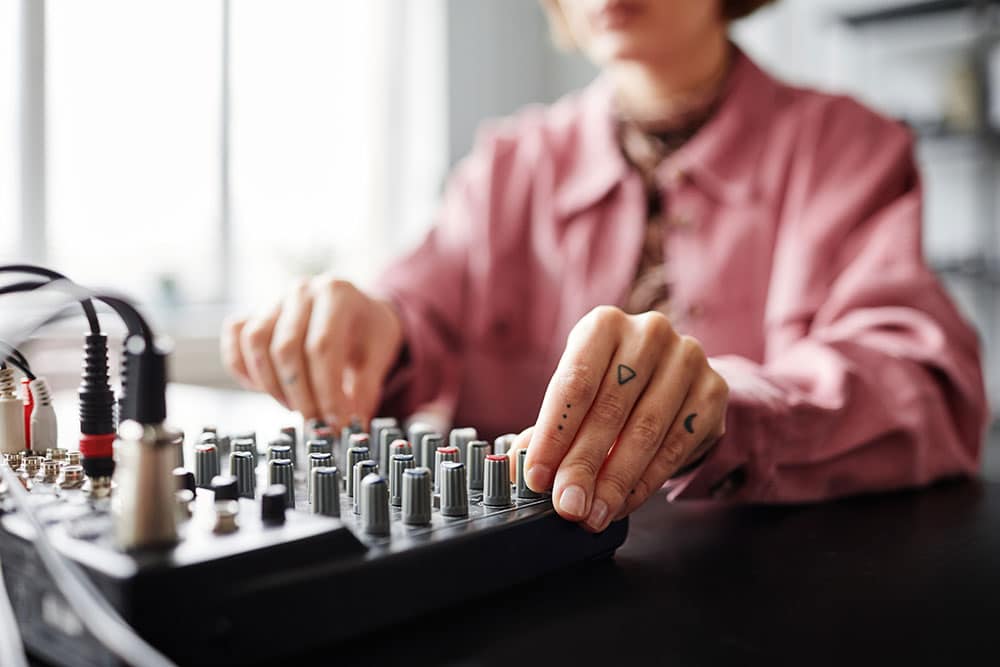
In the Golden Age of cinema, horror scores were big and unsubtle. They were used to track action in almost a pantomime fashion, like Dracula rising from his crypt.
That changed in 1960 with Hitchcock’s groundbreaking Psycho. This became a turning point for using suspense and the art of subtlety to create an immersive and deeply affecting score. Psycho is also one of the earliest examples of the jump scare, using a ‘stinger’ or ‘scare chord’.
A rise in the popularity of electronic instruments catapulted horror from the silent to the modern era, allowing more experimentation with sound design and music. Musicians took advantage of music technology to create haunting scores and atmospheric sound effects.
Synthesizers were a staple in the 70s and 80s, especially when it came to slasher films like John Carpenter’s Halloween (1978) and George Romero’s Day of the Dead (1985).
Nowadays, filmmakers can use a variety of new sound effects to create tension and heighten feelings of terror and dread.
As we have moved into the modern era of horror, emotional horror has become more prominent and popular. Films like Hereditary and Get Out effectively pull audiences into what the characters are feeling during moments of intense fear or dread.
Dissonant music has become a staple of modern horror, given how effective it is at conveying feelings of grief and conflict. Dissonant music often goes unresolved, meaning it doesn’t have a predictable beginning and end. This makes us feel strained and anxious, helping us relate to the characters on the screen who are feeling similar emotions.
Without resolution in the music, the audience cannot predict what is going to happen next. And that uncertainty is what makes scares so effective.
The level and quality of sound used in contemporary horrors help to create an immersive viewing experience and leave audiences feeling as though they are involved, thus giving them the moments of unnerving that they continually desire.


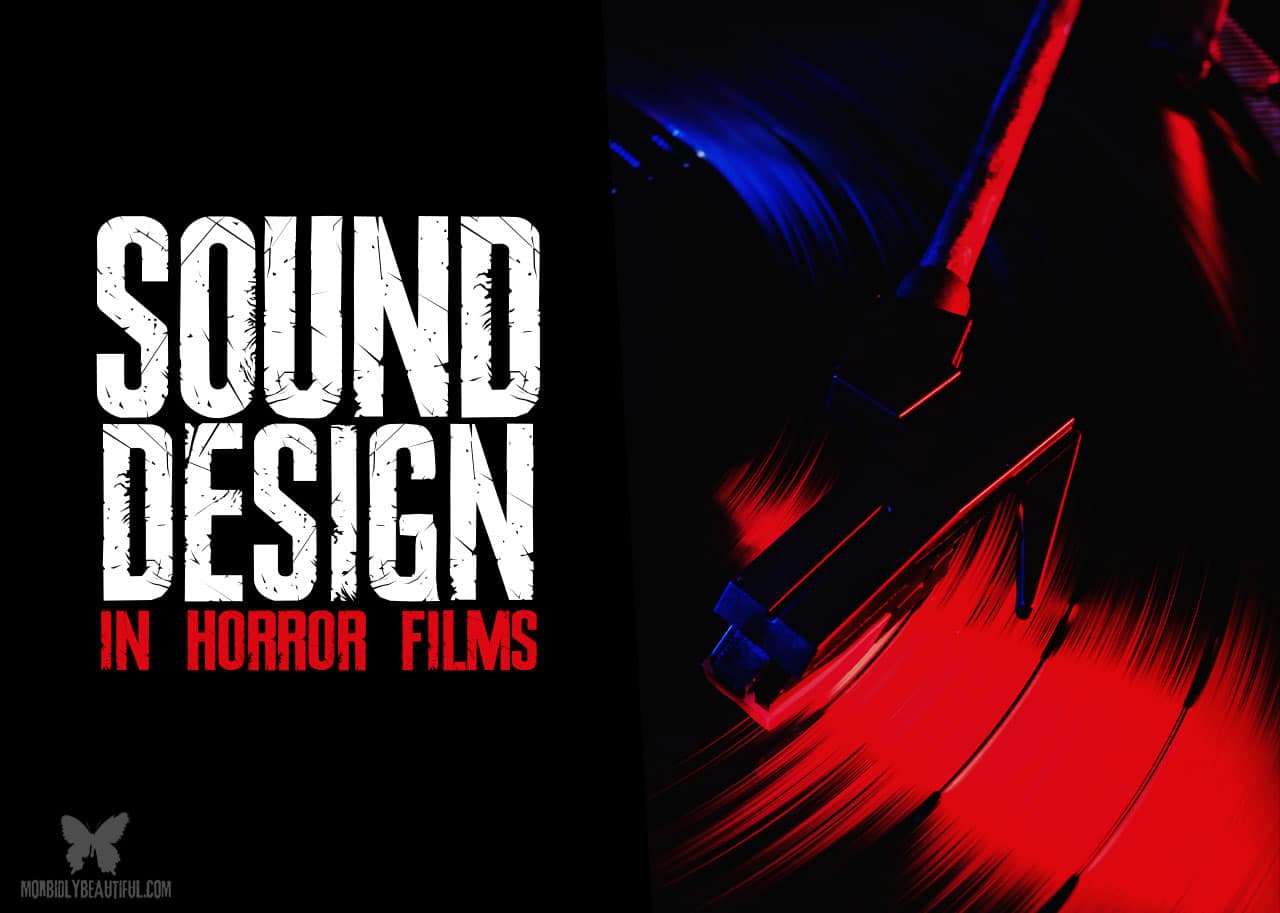
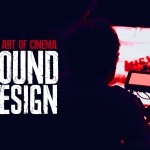

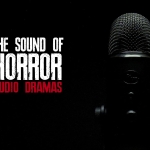
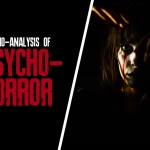






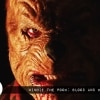
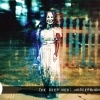
Follow Us!